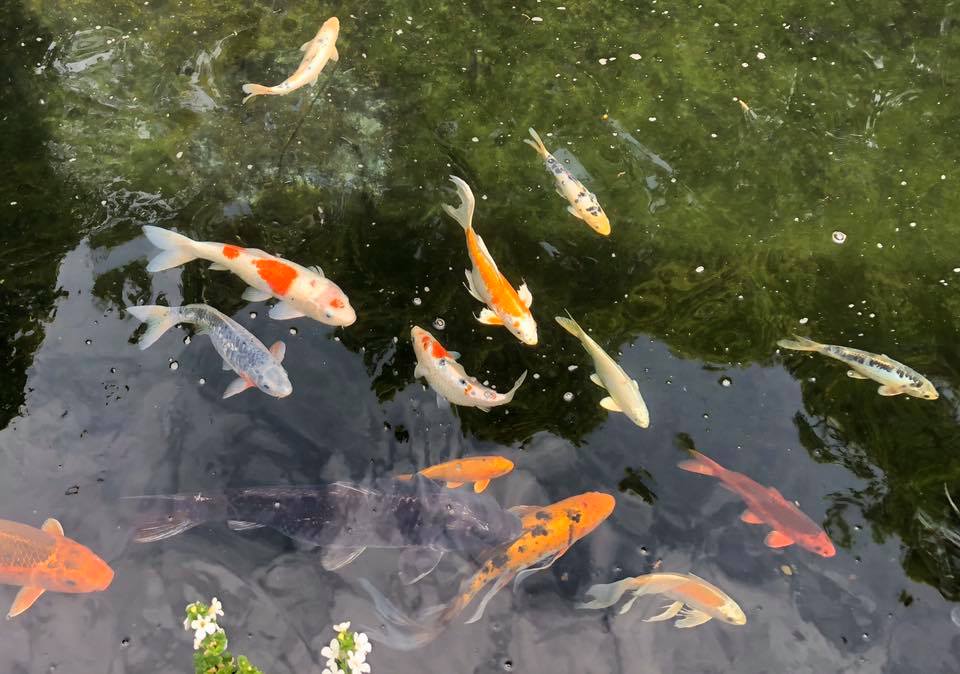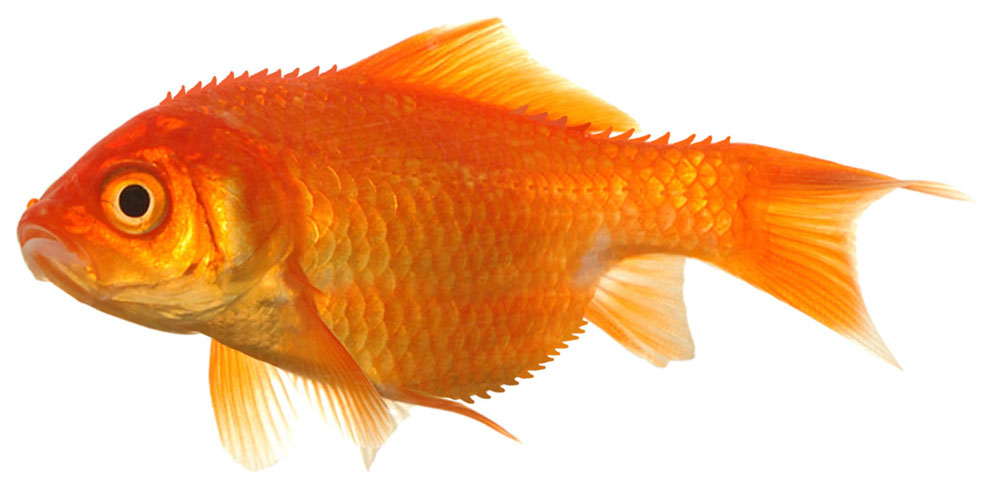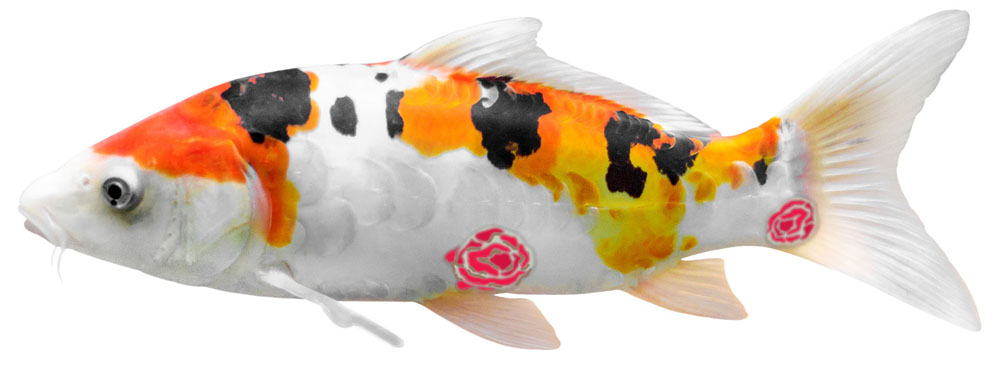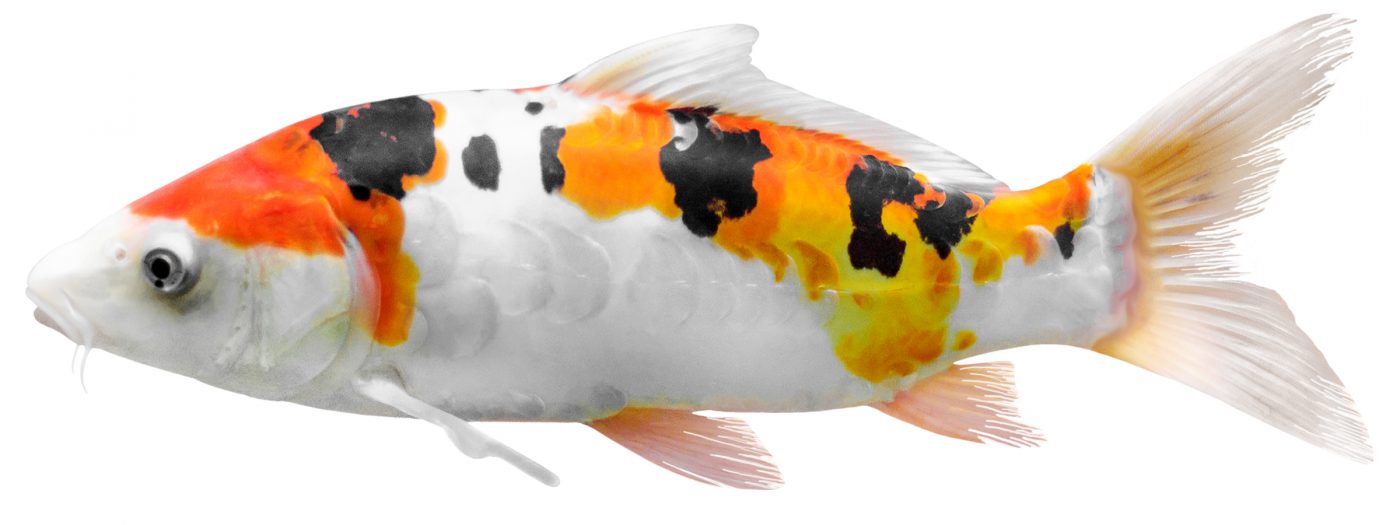21. Common Fish Diseases

Springtime brings about important changes in the dynamics of your garden pond. Along with greening of pond plants and the revival of the fish, we often see an increase in fish disease – rotting fins, ulcerations of the skin and sometimes even death. What about spring brings on common fish diseases? Temperature is the most significant factor. During the spring, temperatures can vary considerably from day to day. Ideally, pond water would rise incrementally each day until optimal – 77°F for the fish – summer temperatures are reached. The sometimes drastic fluctuations in air temperature cause fluctuations in water temperature that directly affect fish health.
Sharing the pond environment with goldfish, koi and plants are a number of bacterial, fungal and viral pathogens. Among these, the bacterium, Aeromonas, is thought to be a major player. Some researchers believe that a virus, Rhabdovirus carpio, is the initial invader and that Aeromonas is a secondary pathogen following the viral attack. Whatever the initial and secondary organisms, these two are ubiquitous to freshwater environments and are detected at outbreaks of ‘Ulcer Disease,’ also referred to as ‘Koi Ucler Disease.’ At water temperatures of 55°F and below, the fish are dormant – feeding has ceased, metabolism has slowed, and waste is significantly diminished. The beneficial bacteria in the filtration system have reduced in number correspondingly to the reduced food source from the fish. In this low temperature range the fish pathogens are also dormant.
We’ve described below several of the most common fish diseases and problems to watch out for. Always observe your pond fish carefully. Familiarity with ‘normal’ behavior and habits will give you a quick indication when there may be problems with your fish. Recurrent water quality problems that foster disease should be dealt with and eliminated.
Know your fish. Watch their habits. Pay close attention to their gills, their scales and skin. Learn the configuration of healthy fish and how they behave. Feeding is a good time to get a better look at their bellies, mouths and fins. Fish in a relatively stress-free environment are friendlier and spend more time near the surface giving you a much better chance to observe them for redness, ulcers, mouth and fin problems. Usually, by the time symptoms become obvious on the body, the disease is well underway. The earlier you detect an illness, determine the cause and begin treatment, the better chance the fish have to recover. Observe symptoms carefully and report them accurately to your dealer.

White Spot – Ich
This protozoan parasite appears as many white spots on the fish’s body when the parasite is in the encysted stage of its lifecycle. The lifecycle of the parasite can be quite long at the lower temperatures in your pond. Re-treatment should be administered 4-7 days after the parasites are no longer visible.


Anchor Worm and Fish Louse
These large crustaceans are visible to the eye and cause weakened fish. The wounds they cause can become infected by secondary pathogens. These parasites should be removed with tweezers and the remaining wound treated with a topical solution of diluted mercurochrome. Following this, the pond should be treated to kill remaining parasites.


Wasting and Unexplained Fish Loss
This can be caused by poor water quality, internal problems, and malnutrition. Water quality should be improved with filtration. See nutrition section to set up the proper nutrition schedule.


Dropsy

Dropsy is characterized by a bloated appearance and protruding scales. The cause can be many different internal problems that are usually not contagious. Treatment only helps about 50% of the time.

Bacterial Infections
Among other common fish diseases is bacterial problems that will present as ulcers, red patches, and white slime-like areas on fish, also referred to as ‘Koi Ucler Disease.’ Fish exhibit diminished appetite and are listless, often hanging near the bottom or hiding among rocks or other cover.


Secondary Fish Diseases
Finrot
This is caused by poor water quality and stress resulting from a bacterial infection. In a few months, the fin will regrow and pigment will be restored. Water quality should be increased with filtration.


Fungus

This secondary infection can kill fish if left untreated. Mouth fungus, reddened lips, and cotton-like growths are symptoms of fungal infections.

We cannot be responsible for fish loss due to treatments outlined on this site.
We encourage you to buy healthy livestock from reputable dealers, observe fish carefully
at regular intervals and test your water frequently for problems.
•• Prevention is always your first line of defense against disease. ••
